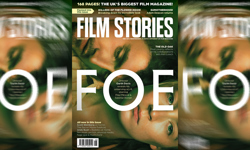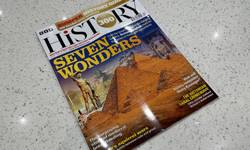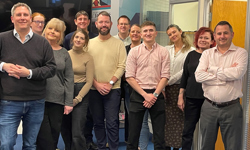Back in June 1995, a Private Eye reader wrote a letter to the magazine enquiring about the newly launched “WWW page”: “Sir – I was wondering if you had any plans to put further sections of the Eye on the net?” The reply was short and to the point: “…No. Go and buy the mag. Ed.”
Nearly twenty years on, editor Ian Hislop’s attitude to putting the magazine’s content online remains unchanged, and during a period when other publications have seen their print circulation plummet while they chase a difficult to monetise digital audience, sales of Private Eye have soared.
Since 2000, the magazine’s circulation has grown by around 40,000. Most of this is accounted for by a leap in the number of subscribers from just over 72,000 to more than 128,000, while the newsstand trade remains healthy, if volatile. According to the Audit Bureau of Circulations, in June 2013, Private Eye’s circulation stood at 222,880, up 9% on a decade earlier.
Hislop explains: “I looked at newspapers and magazines giving away what they had for free, not gaining any readers through it, but actually losing them. It seemed to me that was madness. We used to put up more on the website, but I took a lot of it down, because I thought our unique selling point is you buy this magazine and then you get to read everything.”
He adds: “Having caused enormous problems for other industries, the generous giving away of others’ work and time for free isn’t a model for journalists. You end up having no income, therefore either sacking all the journalists you have or depending on interns who you don’t pay. That seems to me a really useless model to be quite honest.”
No interns here
“If you look at the Eye, people like Craig Brown and Francis [Wheen] don’t really work for free, and nor do I expect them to. Why should someone who’s that good do all this for nothing? I want to pay journalists. I don’t have interns here, I pay everyone, and the way to do that seems to me to produce a product that people pay for. That sounds terribly capitalist, but the magazine only costs a quid fifty; that’s half a cup of coffee.”
Managing director Sheila Molnar agrees. After a brief period in the late 1990s, when Private Eye joined forces with MSN.com to produce its website, she took the decision to remove content from the internet. “We started by putting masses of stuff up. I decided to take an awful lot down,” recalls Molnar. “I thought: ‘the journalists have got to pay their mortgages’. We took it down and sales went up as a result.”
Molnar, who joined Private Eye in the mid-1970s as an accounts assistant, and like many of the magazine’s staff never left, believes: “The whole point of the website is to give people a taste. With a digital edition, you don’t get that wonderful feeling of reading the paper. You read the Eye in a special way. For instance, I came to the Eye through the back pages.”
Importance of the cover
Marketing is mainly done in-house: readers buy Private Eye off the shelf and are then persuaded by adverts inside the magazine to subscribe. Newsstand sales vary between 86,000 and 125,000. “It’s much more variable than it used to be,” explains Molnar; “It’s cover driven. People have got so many other distractions.” When she asks newsagents what they want from the magazine, they usually say ‘a funnier cover’. This year’s bestselling covers include: ‘Woman has baby’ marking the arrival of Prince George, a ‘Press Regulation Special’ featuring cute kittens with the magazine’s trademark speech bubbles sycophantically praising the Government, the Opposition and Hugh Grant’s latest film, and a ‘Halloween Special’ cover featuring Rebekah Brooks. The latter caused a bit of a stir when the judge in the phone-hacking trial described it as a “joke in especially bad taste”. A tense day followed for Hislop and his team before the attorney general decided that proceedings for potential contempt of court were not required.
“We’ve got unique content, that’s the reason we’re doing so well,” says Molnar. “You can’t find what’s in Private Eye anywhere else. We’ve got an incredibly loyal readership. After all the furore over this cover, people were contacting us and saying I haven’t read Private Eye, but I’m going to buy it to support you. People see us as a symbol of everything that’s good about the press.”
Some digital activity
Private Eye is not a complete digital refusenik. The magazine has a website, which gives a flavour of what’s inside, but is primarily designed to act as a draw to readers to buy the print version. There is also a Twitter account, maintained by journalist Jane Mackenzie: @PrivateEyeNews, which again offers a brief taste of what readers can expect, without giving too much away, and has nearly 290,000 followers.
“People in Scotland get angered if we tweet stories before they receive their copy of the magazine [which goes on sale on a Tuesday afternoon in central London, but takes longer to post out to the rest of the country], but we can’t stop other people tweeting stuff,” admits Mackenzie. “Sometimes I send a polite request if someone tweets a cartoonist’s work, pointing out that is their work, and usually people are terribly apologetic and take it down.”
Hislop is quite happy to leave these forays into the digital world in the ‘capable hands’ of those who know more about it than him. He has only ever tweeted once, when he said @realianhislop: “I am the real Ian Hislop. Anyone else claiming to be me twittering is, unsurprisingly, a fake. This should be my only tweet. Thankyou.”
My first full-time job in journalism was at Private Eye, between 1999 and 2002, and I am relieved to see that on the surface, little has changed at the Soho townhouse occupied by the magazine’s offices. Stories are still physically laid out on paper, although they are then transferred to computer. “We still lay it out and look at it, because I like to see it in the format the readers will see it in before shoving it on a screen,” says Hislop. “I think things designed on screens tend to look like screens and the design gets a bit bland, whereas if you lay it out on paper like we do, it looks different.”
The 16-90 demographic
Hislop assumes that all Private Eye readers are “bright and literate and clever and entertaining with a good sense of humour”, but he doesn’t care whether they are 16 or 90. “Young people don’t seem to have a problem reading a magazine, despite what you’re told, they seem perfectly capable of focusing on print for 1,000 words.” Older readers, meanwhile, are not enamoured of the magazine’s tiny font size. “I asked the readers what they thought just recently and got thousands of replies,” the editor reveals. “It’s pretty evenly split, there’s a whole load of people saying ‘for god’s sake put the print size up’ and the other side saying ‘get some glasses, there’s nothing wrong with it’.”
So what is the secret of Private Eye’s success? “I think the basic trick is managing to appear the same and changing, keeping up the variety but within a format that people recognise and like,” believes Hislop. “So there are new columns, there are new journalists. Part of the reason for the Eye’s success may be that because everybody else has been sacked on all other newspapers, they end up here, so we do get fantastic stories and very good people writing them.”
Not signing up
Hislop gave evidence at the Leveson Inquiry into press standards, and he remains committed to his stance that the law already provides recourse for victims of press misdemeanour and is adamant that Private Eye will not sign up to any new regulator, even though his predecessor as editor, Richard Ingrams, was a member of the Press Council, the forerunner to the Press Complaints Commission.
“If [MPs] want to change the law on a front page apology, do a law and then let’s obey the law. It’s a general body that regulates you and then has a permanent effect I don’t want. If they want to enact a privacy law, they are perfectly entitled to as politicians. But they don’t have a mandate to set up a vehicle in order to control the press,” he insists.
Private Eye has saved “a huge amount of money” by not investing in a digital edition, according to Hislop, who has not been tempted to bring out a tablet version of the magazine. “I don’t think there’s any evidence that it’s worked for anyone. I think people get it and then don’t use it, whereas if you buy a paper, you read it. The Eye has always been a club and you are buying access to a world of stories and jokes you can’t get anywhere else.”
However, Adam Macqueen, author of Private Eye: The First 50 Years, an A-Z, believes the magazine would lend itself quite well to a digital edition for subscribers: “It would get to subscribers ahead of the post – which would be of particular interest to the growing number of international subscribers – and it would mean the legions of older readers who complain about the size of our text would be able to enlarge it. Plus you would be able to blow up cartoons and see them in their full glory.”
Can other publications learn from Private Eye’s commitment to print? “I don’t think they are very interested in learning from us to be honest,” Hislop admits. “They say ‘you’re just niche; models don’t apply; your appeal is retro’. But then again there is a big young readership for the Eye and none of them seem to have this resistance to print.”
(Picture: info@tobymadden.com)












